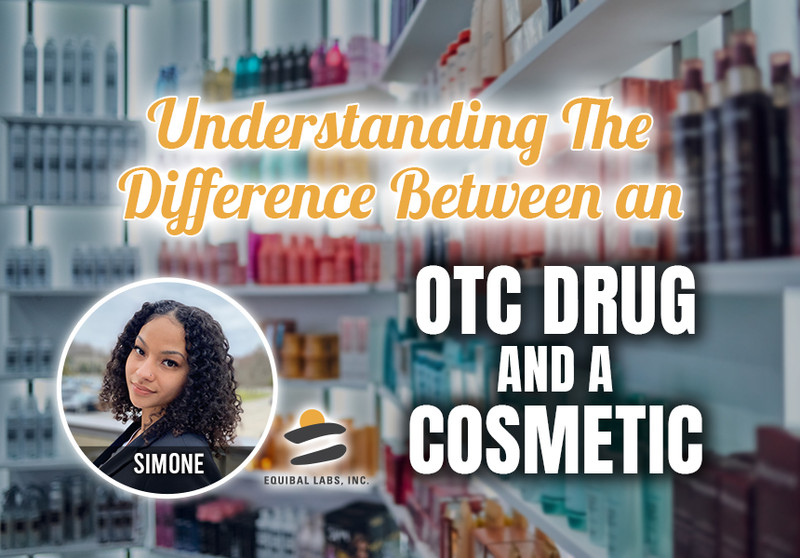In the United States, the FDA (Food and Drug Administration) distinguishes between cosmetics and drugs based on their intended use and function.
Cosmetics, as defined by the FDA, are products that are meant to be applied to the human body for purposes such as cleansing, beautifying, promoting attractiveness, or altering appearance. Examples of cosmetics include skin moisturizers, perfumes, makeup, shampoos, nail polishes, and hair colors. FDA approval for cosmetics to be sold on the market is not typically needed, with the exception of color additives. Bottom line: they do not require undergoing strict tests to determine their efficacy.
On the other hand, a product qualifies as a drug when it is intended for a therapeutic use, which includes actions like diagnosing, mitigating, treating, curing, or preventing diseases, or affecting the structure or function of the body. Before drug products can be marketed, they must undergo rigorous testing to demonstrate their effectiveness and safety, as they can exert profound effects on the body. Drugs can be marketed as Over the Counter (OTC) if they meet the FDA's established OTC monographs or if they are granted approval through the submission of a New Drug Application (NDA) to the FDA.
In simpler terms, cosmetics are primarily designed for enhancing one's appearance, while drugs are tailored to address medical or health-related concerns.
Is it possible to be both a drug and cosmetic?
Of course, it's possible! I like to call these OTC cosmetic drugs. It's crucial to note that there's no official FDA designation of an "OTC cosmetic drug," but this term is often used to describe a drug product that also possesses cosmetic properties. Take sunscreen, for example; it is an OTC drug with the potential to prevent diseases, and depending on the brand, it may offer moisturizing and skin-soothing benefits.
In practice, differentiating between a cosmetic and a drug can be difficult, as products might appear similar. Yet, the key distinction lies in their intended use, rather than their ingredients. For instance, if a product harnesses niacinamide and markets it for its moisturizing and beautifying attributes, without emphasizing its potential to address hyperpigmentation and other skin issues, it would be categorized as a cosmetic.
Isn't this fascinating?
Exploring your favorite active ingredients provides valuable insights into their efficacy and how they're marketed differently in drug cosmetics versus regular cosmetic products. Examining the language used for ingredients reveals intriguing nuances in their portrayal.
Take, for example, products enriched with salicylic acid and/or glycolic acid. In drug cosmetics, these ingredients are lauded as potent active ingredients, their efficacy backed by clinical evidence. Usually marketed with phrases like "clinically proven" and "dermatologist-recommended" on their labels, emphasizing their medicinal properties in tackling acne-related skin issues. However, when these ingredients are incorporated in the formulation of regular cosmetic products, the language around their intended use is switched. They are now key ingredients for smoother and brighter skin, promising a radiant, velvety complexion.
| Cosmetic Claims | OTC Claims |
|
|
|
|
|
|
|
|
In conclusion, always remain vigilant when discerning between an approved drug and a cosmetic product. Although packaging might be similar, their marketing should be distinctly different. If it isn't, it should raise a red flag. Many cosmetics claim to possess groundbreaking, research-backed, and clinically proven solutions to age-old issues. Nevertheless, it's essential to reiterate that cosmetics should not make drug claims unless they have received FDA approval as a drug. Thus, take the time to read product packaging and make an informed decision about whether a cosmetic product suits your needs.
In the coming week, we'll embark on an insightful journey into the science behind finipil®, aiming to understand the efficacy of this remarkable product. We'll delve into the intricate components that make up finipil® antiseptic cream, with a special focus on Benzethonium Chloride and other pivotal ingredients that have positioned it as the preferred choice for salon professionals and consumers alike. Furthermore, I'll be sharing some of my personal favorite applications for finipil®. Until then, happy shopping!
Simone
References
- Prime Matter. (2022, Nov. 7th) The Difference Between Cosmetic and OTC Designations. Available at The Difference Between Cosmetic and OTC Designations (primematterlabs.com)
- Beautiful With Brains. (accessed on 2023, Oct 18) What's the Difference Between a Cosmetic and a Drug (And Why it Matters?). Available at Cosmetics VS Drugs: What's The Difference? – Beautiful With Brains

